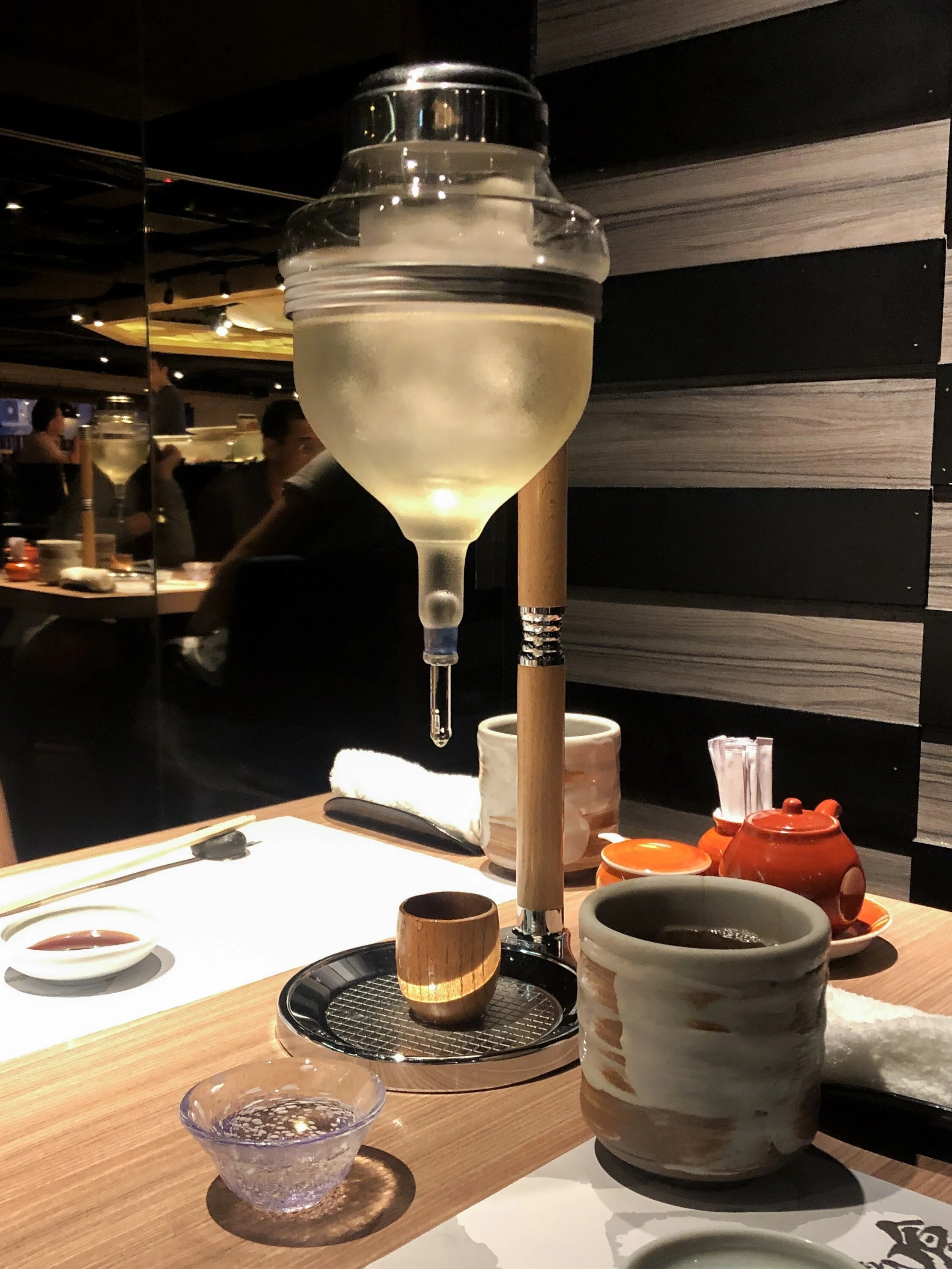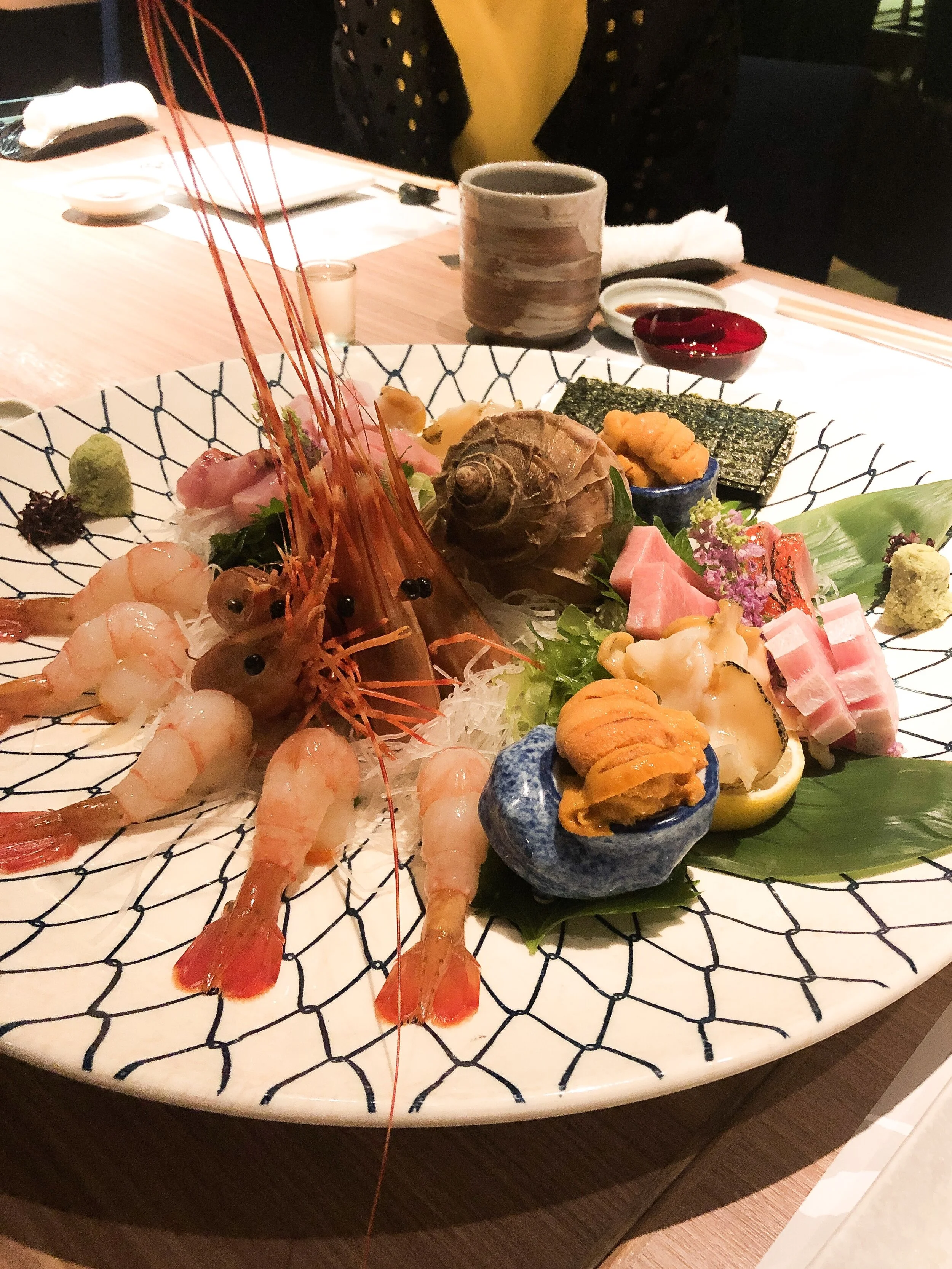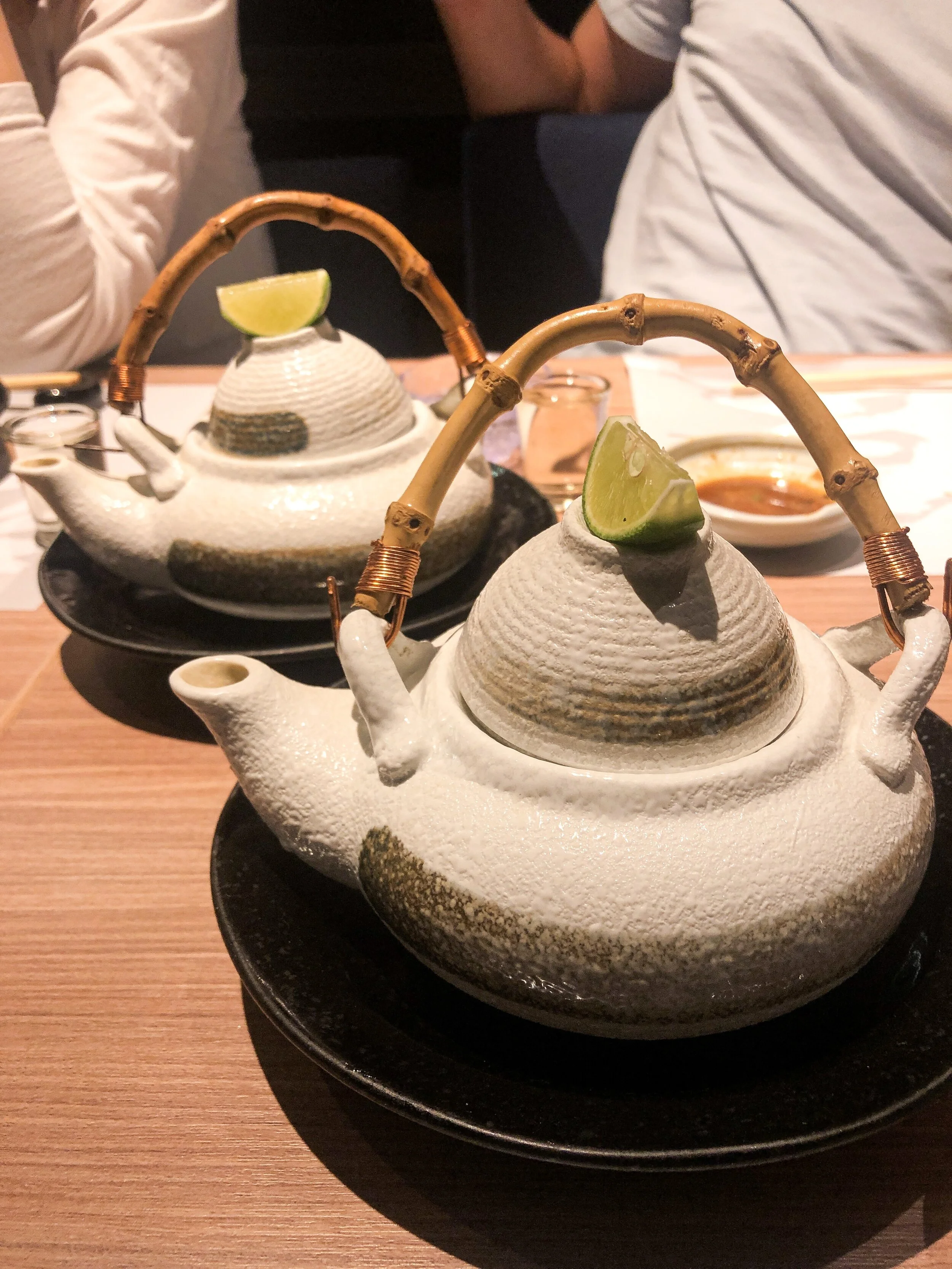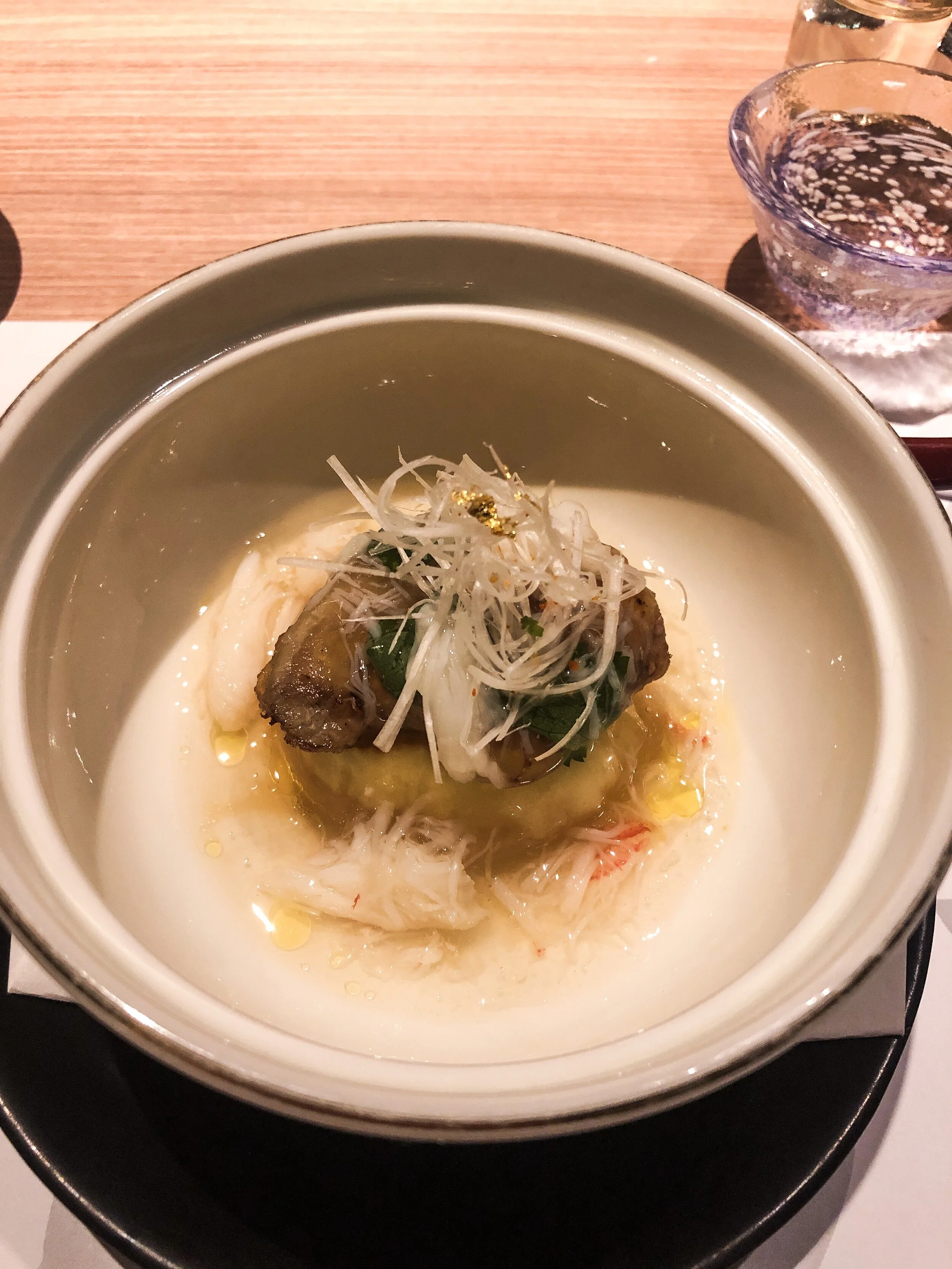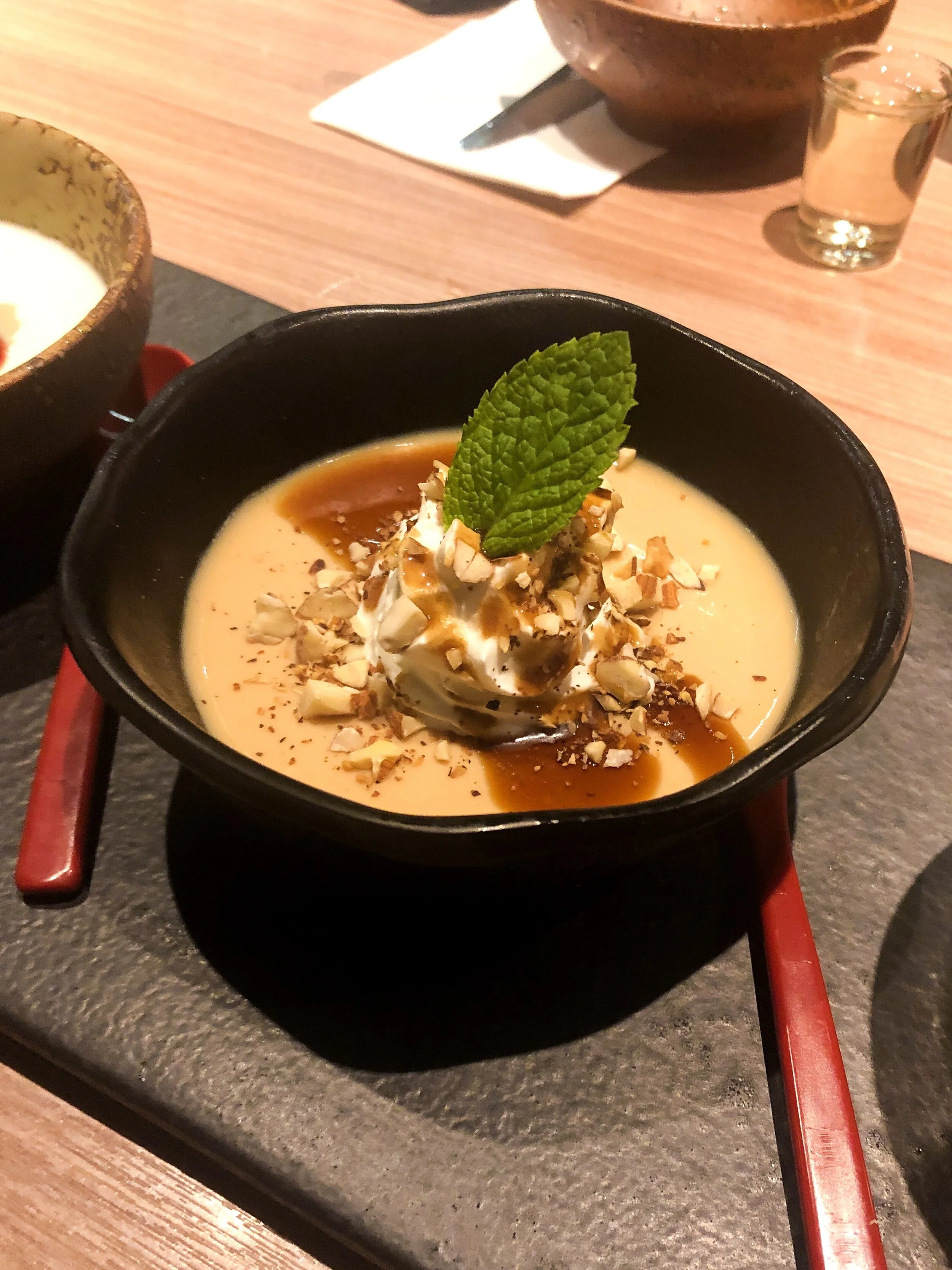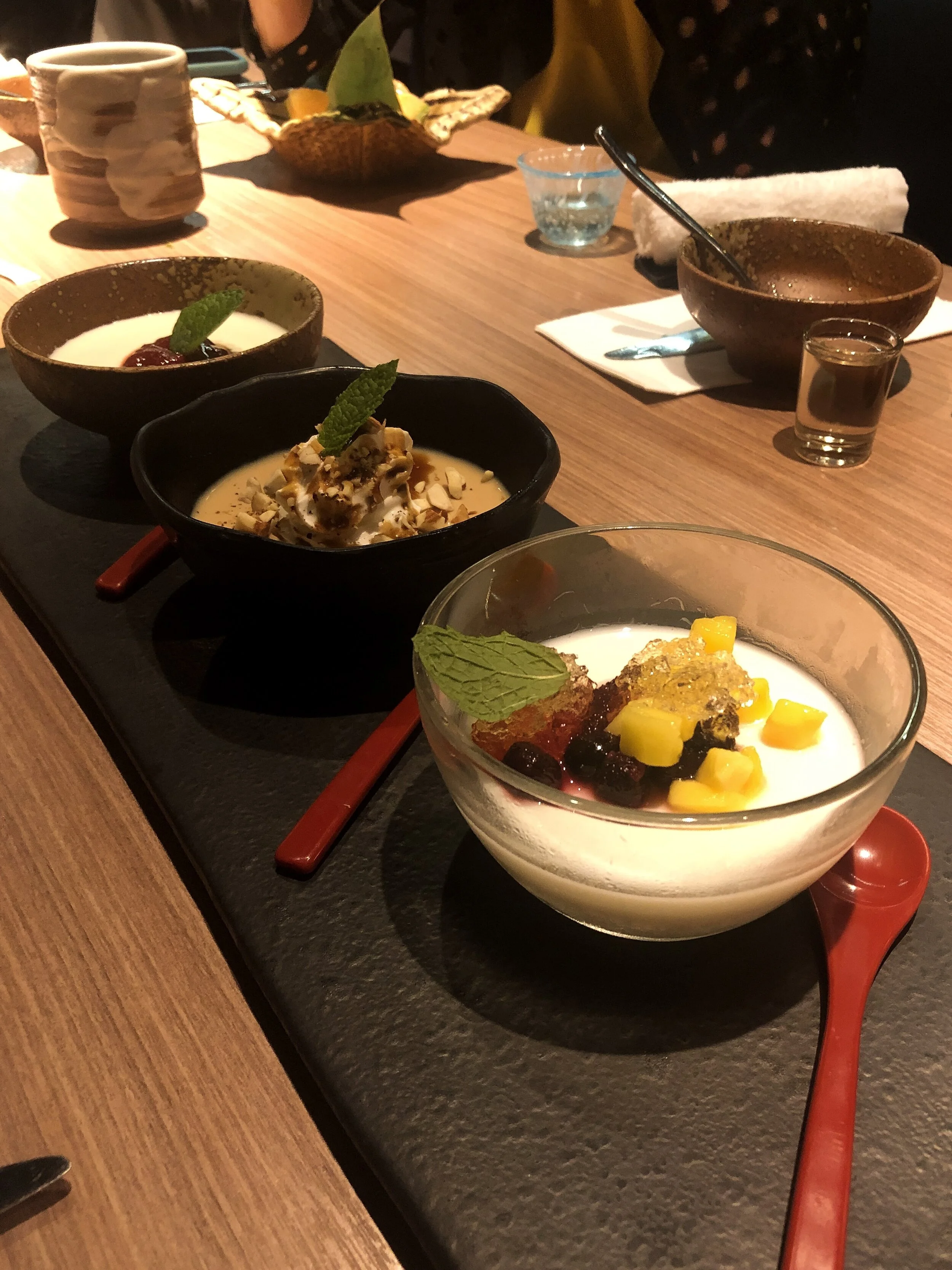Hong Kong's Sushi Kuu
Author & Photographer: Olivia Xiong
As an unreasonably indecisive diner, asking me to choose a restaurant for lunch is a comically strenuous request. I am uncertain as to whether or not my indecisiveness stems from a lack of preference or insistence, or perhaps I am just plain picky. I can’t decide. I can, however, say with certainty that Sushi Kuu in Hong Kong’s Lan Kwai Fong district has long reigned as my favorite restaurant in the world. It’s the harmonious combination of the restaurant’s ambitious yet classical take on Japanese cuisine, the gregarious and hospitable chefs, the precision and quality put into every component of each dish, and the sake dispenser conveniently placed at the end of every table.
Upon entering the restaurant, the numerous chefs stationed behind the sprawling sushi counter briefly pause their preparations to warmly welcome newly arriving guests. A myriad of dishes in progress placed in front of them -- an array of artfully plated sashimi featuring fish flown in daily from Japan, the beginnings of two decadent uni hand rolls, and small round of freshly grated daikon radish and wasabi -- provide eager diners a glimpse into the elaborate meal that awaits. The dimly lit dining room, accompanied by dark walls broken up with warm wooden accents and sleek, plush seating, accentuates the restaurant’s upscale environment. The menu at Sushi Kuu is extremely varied: diners can opt for more traditional nigiri and sashimi dishes, venture into contemporary territory with items such as “Tobanyaki” silver cod with cheese or grilled Wagyu beef burger with curry rice, or be indecisive like me and my family and simply pick omakase to leave it up to executive chef Mukogawa Satoru.
Our meal--as most meals should--began with sake. One waitress passed around a small platter of different sized and colored sake cups for each of us to select, while another brought an oddly shaped sake-dispensing contraption filled with ice to our table. Chef Mukogawa excitedly hurried over from his position at the counter, called for samurai shots for the table, and wished us a pleasant experience before rushing back to continue his work. We snacked on a platter of salted edamame before indulging in our first dish -- a small bowl of buttery cod liver lightly flavored with hints of fresh yuzu that brought sharpness and acidity to counter the richness of the dish. The next plate mirrored a similar balancing act between rich and mild by the use of intensely flavorful ikura and mildly sweet grated daikon radish, combined together in an otherwise unassumingly simple glass bowl. The sashimi course echoed the restaurant’s emphasis on meticulously curating and preparing the freshest ingredients to shine in their own way: red snapper pieces were lightly seared on the skin to bring out the flavor of the mild fish, and crisp seaweed accompanied petite bowls piled high with rich uni, while the large, sweet shrimp remained untouched to showcase its signature delicate and clean taste. A dipping sauce of finely minced scallions and soy sauce, as well as sides of ample amounts of wasabi, pickled ginger, and wild purple flowers all served as the perfect accompaniments to the sea whelk, yellowtail belly, and otoro sashimi pieces. We finished quickly, each of us quietly sipping hot tea and sake once we finished.
And then, there was more. Grilled mackerel with lightly cooked okra, pickled jujube, and a small mound of seared grated daikon radish, followed by foie gras with shiso, shredded crab, and white scallion. Then, a mini teacup, lime wedge, and teapot for each diner filled with the clearest yet most incredibly flavored seafood broth that tasted like an upscale, aquatic version of the most perfect and healing homemade chicken soup. The savory courses finished with an elaborate array of nigiri, seared salmon and rice wrapped in lettuce, and an extravagant bowl of sushi rice, ikura, uni, caviar, and gold leaf. Each piece was to be eaten as-is, and details down to the specific cuts placed on the nigiri of the different fish to alter texture, the varying degrees of temperature, and the specific accompaniments such as pickled onion, shiso, or lemon had all been carefully thought through.
Dessert, of course, was next. Note that a few courses back, we all felt full. While my parents almost always have to finish their savory meals with something sweet, my brother and I typically lean towards allocating the most space to savory dishes. While the sweet courses here are generally lighter than typical desserts, such as almond milk tofu, fruity panna cotta, and mint jelly, they aren’t incredibly special and I would suggest you focus on the other, more spectacular dishes. My family and I have been coming to Sushi Kuu for years, and every time we dine with Chef Mukogawa and his team, I am further convinced that no other restaurant can replicate the unbelievably wonderful and delectable dining experience they provide.

